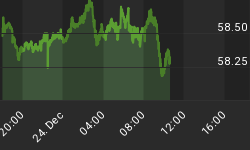McDonald’s is setting out to resolve an age-old problem of ordering fast food under pressure: hungry, unprepared, and with the impatient masses lined up behind you. At that point, it’s a Big Mac or bust—just to order something. But if you’d had time to think it through, you might have ordered something different—or, as McDonald’s is hoping, something more.
McDonald’s answer to this fast-food dilemma is the self-service ordering kiosk coupled with table service—an idea it’s been implementing systematically in its stores.
The CEO of the fast-food giant, Steve Easterbrook, believes that being in a comforting atmosphere where customers can simply order from their peace of their tables is a win-win situation for everyone.
The kiosks were already in roughly 3,500 U.S. McDonald's restaurants as of March, or about one-fourth of its domestic stores.
And CEO Easterbrook says the chain has noticed that customers are willing to order more the longer they stick around.
“What we’re finding is when people dwell more, they select more…So there’s a little bit of an average check boost,” media cited Easterbrook as saying.
Now, the plan is to upgrade 1,000 stores in the U.S. with this technology every quarter for the next eight to nine quarters.
McDonald’s restaurants in Canada, the UK, France and Germany are already fully integrated with kiosk service and mobile ordering. But according to Easterbrook, the U.S. is a little bit behind, though no one’s quite sure why and he didn’t elaborate.
McDonald’s is also planning to add more ordering options for customers in the U.S. This includes the recent addition of mobile ordering, allowing customers to place orders and wait for them in their cars. Even a delivery service will be realized in some parts of the U.S. Related: Facebook’s War On Propaganda
The world—down to food—is becoming seamless.
According to recent study, the U.S. interactive kiosk market was worth $717 million in 2016. Thirty percent of those kiosks were in the food and beverage market, making it the country’s largest kiosk category.
Plenty of companies have launched food deliver services and automation, including Kroger, Walmart and Meijer. Walmart is planning to expand its Online Grocery Delivery option to more than 40 percent of U.S. households by the end of the year.
“We’re saving customers time by leveraging new technology, and connecting all the parts of our business into a single seamless shopping experience: great stores, easy pickup, fast delivery, and apps and websites that are simple to use,” said Greg Foran, president and CEO, Walmart U.S.
Amazon also introduced new technology in its Amazon Go store, opening a supermarket with no checkout operators or self-service tills. Using hundreds of ceiling-mounted cameras and electronic sensors to identify each costumer and track the items they select, shopping becomes a breeze.
There’s always a dark side to innovation, though, and in this case it will impact jobs. McDonald’s innovations will likely hit low wage workers as human cashiers increasingly become replaced. Fewer employees are likely to be necessary when their key task is to facilitate the use of kiosks, though McDonald’s says the new system requires more employees to execute (for now).
“We need more employees. The idea behind these investments is … you grow your transactions and grow your business and when we grow, we need more staff,” Ted Lyon, the owner of 10 McDonald’s restaurants in the U.S. south, told USA Today.
By Damir Kaletovic for Safehaven.com
More Top Reads From Safehaven.com:
















